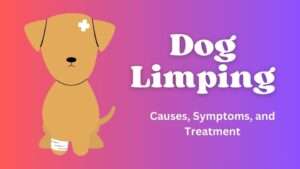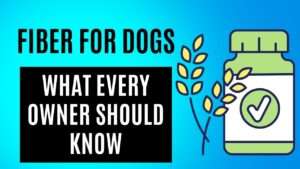Neutering, a term often heard in discussions about responsible pet ownership, is a crucial decision many dog owners face. But what does it entail? Is it merely about population control, or are there more profound implications? In this comprehensive guide, we delve into the world of neutering your dog, exploring its benefits, risks, procedures, and post-operative care. Join us as we unravel everything you need to know to make informed decisions about your furry friend’s well-being.
Contents Overview
Understanding Neutering
What is Neutering
Neutering, a common term in the world of pet care, refers to the surgical procedure of removing reproductive organs from an animal, often used interchangeably with “castration” for males and “spaying” for females. This procedure has several important purposes and benefits, making it a crucial aspect of responsible pet ownership.
Why Neuter Your Dog
Let’s delve deeper into why it’s done:
- Population Control:
- Neutering plays a pivotal role in controlling the pet population, especially in areas where stray animals are prevalent.
- By preventing unwanted pregnancies, neutering helps reduce the number of homeless animals and alleviates the burden on animal shelters and rescue organizations.
- Behavioral Improvement:
- Neutering can significantly influence and improve certain behavioral aspects in dogs.
- In male dogs, neutering can help reduce aggressive behaviors, including dominance-related aggression and territorial marking.
- Female dogs may experience reduced restlessness and aggression during heat cycles, making them easier to manage and less prone to wandering.
- Health Benefits:
- Neutering offers several health advantages for both male and female dogs.
- In males, it can prevent testicular cancer and reduce the risk of prostate problems later in life.
- Female dogs benefit from the prevention of uterine infections (such as pyometra) and a decreased risk of mammary gland tumors, particularly if the procedure is performed before the first heat cycle.
- Prevention of Unwanted Litters:
- Neutering eliminates the risk of accidental breeding and the birth of unwanted puppies.
- This not only reduces the burden on pet owners but also helps prevent the proliferation of undesirable traits or genetic conditions within the canine population.
- Contributing to Responsible Pet Ownership:
- By opting to neuter their dogs, pet owners demonstrate their commitment to responsible pet ownership and the welfare of animals.
- Neutering helps ensure that dogs receive the care and attention they need without adding to the existing population of homeless or neglected animals.
- Ethical Considerations:
- Neutering is often considered an ethical choice, as it prevents the potential suffering of animals resulting from overpopulation, neglect, or abandonment.
- It aligns with the principle of reducing harm and promoting the well-being of animals within communities.
In summary, neutering your dog is not only a responsible decision but also one that offers numerous benefits for both your pet and the wider community. By understanding the reasons behind this procedure and its positive impact, pet owners can make informed choices that contribute to the overall welfare of animals.
When to Neuter Your Dog
Determining the optimal time to neuter your dog involves considering various factors, including breed, size, health status, and individual circumstances. Here’s a detailed breakdown of when to consider neutering your canine companion:
- Early Neutering:
- Some veterinarians advocate for early-age neutering, typically performed between 8 to 16 weeks of age.
- Early neutering is often recommended for shelter and rescue animals to prevent unplanned litters and promote responsible pet ownership.
- Research suggests that early neutering may offer certain health and behavioral benefits, such as reducing the risk of certain cancers and preventing unwanted behaviors associated with sexual maturity.
- Traditional Neutering:
- For many dogs, traditional neutering is performed between 6 to 12 months of age, although the exact timing may vary based on individual factors.
- This approach allows the dog to reach sexual maturity before undergoing the procedure but still prevents unwanted pregnancies and offers health benefits.
- Traditional neutering may be preferred for larger breeds or dogs with specific health considerations, as it allows for more mature skeletal development before removing sex hormones.
- Consider Breed-Specific Recommendations:
- Some breeds may have specific recommendations regarding the timing of neutering due to breed-specific health concerns or growth patterns.
- Large and giant breeds, such as Great Danes and Saint Bernards, may benefit from delayed neutering to allow for proper skeletal growth and reduce the risk of orthopedic issues.
- Smaller breeds may undergo early neutering without significant adverse effects on growth or development.
- Health Considerations:
- Your veterinarian will consider your dog’s overall health status when determining the best time for neutering.
- Dogs with certain medical conditions or genetic predispositions may require special considerations regarding anesthesia and surgical risks.
- It’s essential to discuss any health concerns with your veterinarian to ensure that neutering is performed safely and effectively.
- Behavioral Considerations:
- Neutering can influence behavior, and timing may play a role in addressing specific behavioral issues.
- For example, early neutering may help prevent the development of certain undesirable behaviors associated with sexual maturity, such as aggression and roaming.
- However, it’s essential to consult with a professional behaviorist or veterinarian to address behavioral concerns comprehensively.
- Individual Circumstances:
- The decision to neuter your dog should take into account your circumstances, including your lifestyle, living situation, and plans for your pet.
- Considerations such as the presence of intact male or female dogs in the household, breeding intentions, and the dog’s temperament and behavior should all be factored into the decision-making process.
In conclusion, the optimal time to neuter your dog depends on a variety of factors, and there is no one-size-fits-all approach. By consulting with your veterinarian and considering your dog’s unique needs and circumstances, you can make an informed decision that promotes their health, well-being, and responsible pet ownership.
The Neutering Procedure
The neutering procedure, whether for male dogs (castration) or female dogs (spaying), is a common surgical intervention performed by veterinarians. Here’s a comprehensive overview of what to expect during the neutering process:
- Pre-Surgical Preparation:
- Before the procedure, your veterinarian will conduct a thorough examination of your dog to assess their overall health and ensure they are fit for surgery.
- Blood tests may be performed to check for any underlying health conditions and to ensure the safety of anesthesia.
- You may be instructed to withhold food and water for a specific period before the surgery to prevent complications during anesthesia.
- Anesthesia Administration:
- Neutering requires general anesthesia to ensure that the dog remains unconscious and pain-free throughout the procedure.
- An anesthetic agent is administered intravenously or via inhalation, depending on the veterinarian’s preference and the dog’s individual needs.
- Once the dog is under anesthesia, they will be carefully monitored by veterinary staff to ensure their safety and well-being throughout the surgery.
- Surgical Procedure:
- For male dogs (castration):
- The scrotum is shaved and sterilized, and a small incision is made to access the testicles.
- The testes are then carefully removed through the incision, and the blood vessels and spermatic cords are ligated to prevent bleeding.
- The incision is typically closed with sutures or surgical glue, and a protective dressing may be applied to aid in healing.
- For female dogs (spaying):
- An abdominal incision is made to access the ovaries and uterus.
- The ovaries and sometimes the uterus are then carefully removed to prevent reproduction.
- The abdominal incision is closed with sutures or surgical staples, and the skin incision may be closed with sutures or surgical glue.
- Post-Surgical Care:
- After the procedure, your dog will be monitored closely as they recover from anesthesia.
- Pain management medication may be prescribed to ensure your dog’s comfort during the recovery period.
- Your veterinarian will provide instructions for post-operative care, including wound care, activity restrictions, and monitoring for any signs of complications.
- It’s essential to follow these instructions carefully to promote proper healing and minimize the risk of complications.
- Recovery and Follow-Up:
- Most dogs recover quickly from neutering surgery, but it’s essential to allow them plenty of rest and quiet during the initial recovery period.
- Avoid strenuous activity, jumping, or running for several days to allow the surgical incision to heal properly.
- Your veterinarian may schedule a follow-up appointment to check on your dog’s progress and remove any sutures or staples if necessary.
- Be sure to contact your veterinarian if you notice any signs of infection, excessive swelling, or other concerns during the recovery process.
In summary, the neutering procedure is a routine surgical intervention that offers numerous benefits for both male and female dogs. By understanding the process and providing proper care and attention during the recovery period, you can help ensure a smooth and successful outcome for your canine companion.
The Post-Neutering Procedure
The post-neutering procedure is a crucial phase of your dog’s recovery process following the surgical intervention. Here’s a detailed explanation of what to expect and how to care for your dog after neutering:
- Immediate Post-Surgical Care:
- After the surgery, your dog will be closely monitored by veterinary staff as they recover from anesthesia.
- They may be placed in a quiet, comfortable recovery area to rest and recuperate.
- It’s common for dogs to experience grogginess, disorientation, and mild discomfort in the hours following surgery.
- Pain Management:
- Your veterinarian may prescribe pain medication to help manage your dog’s discomfort during the initial recovery period.
- Follow the prescribed dosage and administration instructions carefully to ensure your dog’s comfort and well-being.
- Monitor your dog for any signs of pain or distress and notify your veterinarian if you have any concerns.
- Wound Care:
- Depending on the type of incision used during the surgery, your dog may have stitches, staples, or surgical glue closing the wound.
- Follow your veterinarian’s instructions for wound care, which may include:
- Monitoring the incision site for signs of infection, such as redness, swelling, or discharge.
- Keeping the incision clean and dry to promote healing.
- Avoiding bathing or swimming for the recommended period to prevent moisture-related complications.
- Preventing your dog from licking or chewing at the incision site, can lead to irritation or infection.
- Activity Restrictions:
- Your dog will need to rest and avoid strenuous activity during the initial recovery period.
- Limit exercise, jumping, running, and rough play for the first few days to allow the surgical incision to heal properly.
- Gradually reintroduce activity as your dog’s condition improves, following your veterinarian’s guidance to prevent complications.
- Dietary Considerations:
- Your dog’s appetite may be reduced immediately following surgery, but they should resume eating within 24-48 hours.
- Offer small, bland meals to encourage eating and prevent gastrointestinal upset.
- Ensure that your dog has access to fresh water at all times to stay hydrated and aid in recovery.
- Monitoring for Complications:
- Keep a close eye on your dog’s overall condition and behavior during the recovery period.
- Contact your veterinarian immediately if you notice any concerning symptoms, such as:
- Excessive swelling, redness, or discharge from the incision site.
- Persistent lethargy, weakness, or disorientation.
- Loss of appetite or refusal to drink water.
- Signs of pain, discomfort, or vocalization.
- Follow-Up Care:
- Your veterinarian may schedule a follow-up appointment to check on your dog’s progress and remove any sutures or staples if necessary.
- Attend all scheduled appointments and follow your veterinarian’s recommendations for post-operative care to ensure the best possible outcome for your dog’s recovery.
In summary, providing proper post-neutering care is essential for promoting your dog’s comfort, healing, and overall well-being. By following your veterinarian’s instructions and monitoring your dog closely for any signs of complications, you can help ensure a smooth and successful recovery from the neutering procedure.
Risks and Considerations
While neutering offers several benefits, it’s essential to consider the potential risks and drawbacks associated with the procedure. Here’s a detailed explanation of the risks and considerations involved:
- Surgical Risks:
- As with any surgical procedure, there are inherent risks associated with anesthesia, incisions, and wound healing.
- Potential surgical risks include:
- Infection at the incision site, which may require antibiotic treatment.
- Bleeding during or after surgery, which may necessitate further intervention.
- Adverse reactions to anesthesia, such as respiratory or cardiovascular complications.
- While these risks are relatively rare, they underscore the importance of choosing a qualified veterinarian and following proper pre-and post-operative care protocols.
- Hormonal Changes:
- Neutering involves the removal of reproductive organs, which can lead to hormonal changes in the body.
- These hormonal changes may affect behavior, metabolism, and overall health in both male and female dogs.
- While neutering can help mitigate certain behavioral issues, such as aggression and roaming, it may also influence other behaviors, such as activity levels and appetite.
- Pet owners should be prepared to address any changes in their dog’s behavior or health following neutering and work closely with their veterinarian to manage any resulting issues.
- Long-Term Health Implications:
- Some studies suggest a potential link between neutering and an increased risk of certain health problems, particularly in certain breeds or individuals.
- For example, neutering has been associated with an increased risk of obesity, orthopedic issues, and certain types of cancer in some dogs.
- While the overall health benefits of neutering often outweigh these potential risks, pet owners need to be aware of and monitor for any long-term health implications.
- Impact on Reproductive Function:
- Neutering permanently eliminates the dog’s ability to reproduce, which may be a consideration for breeders or owners interested in preserving the dog’s genetic lineage.
- While this is often a desired outcome for pet owners seeking to prevent unwanted litters, it’s essential to weigh the implications of permanent infertility carefully.
- Breed-Specific Considerations:
- Certain breeds may have unique considerations regarding the timing and implications of neutering.
- Large and giant breeds, for example, may benefit from delayed neutering to allow for proper skeletal development and reduce the risk of orthopedic issues.
- Conversely, smaller breeds or those prone to certain health conditions may benefit from earlier neutering to mitigate the risk of reproductive-related health problems.
- Individual Health Considerations:
- The decision to neuter should take into account the dog’s health status, including any pre-existing medical conditions or genetic predispositions.
- Dogs with certain health issues may require special considerations regarding anesthesia, surgical techniques, and post-operative care to ensure a safe and successful outcome.
In conclusion, while neutering offers numerous benefits for both dogs and their owners, it’s essential to consider the potential risks and implications carefully. By weighing the risks and benefits and working closely with a qualified veterinarian, pet owners can make informed decisions that promote the overall health and well-being of their canine companions.
Bottom Line
Neutering your dog is a significant decision that requires careful consideration of various factors. While it offers undeniable benefits such as population control and improved health, it’s essential to weigh the risks and consider the individual needs of your furry friend. By consulting with your veterinarian and staying informed about the procedure, you can make the best choices for your canine companion’s well-being.



































+ There are no comments
Add yours